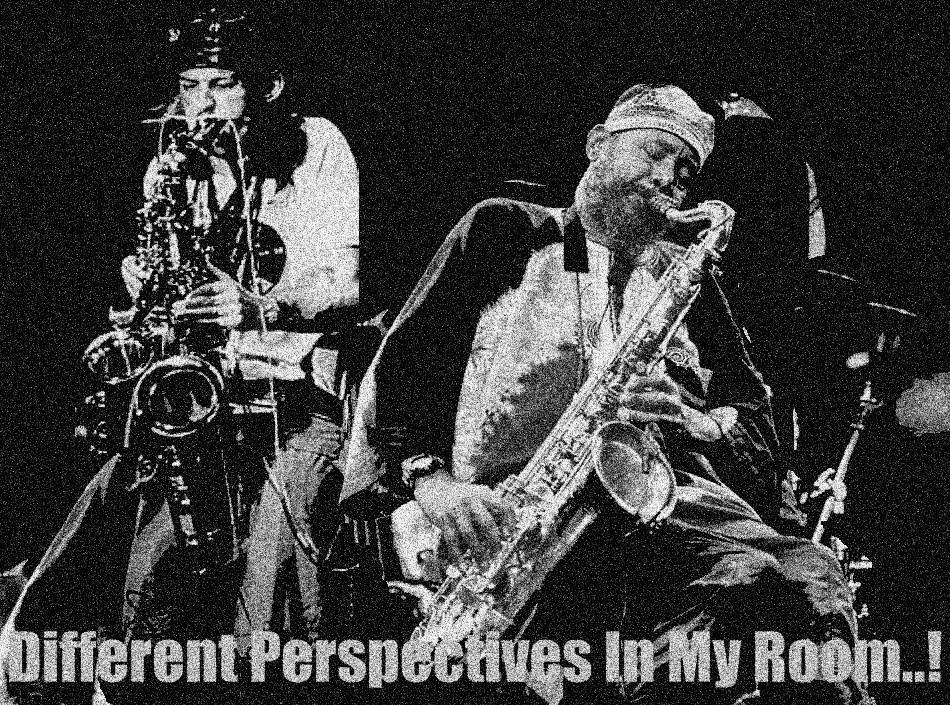Label:
MPS Records/BASF – 29 21431-1
Format:
2 × Vinyl, LP, Album / Country: Germany / Released: 1972
Style:
Fusion, Free Improvisation, Free Jazz
LP
1: Recorded March 20th and 21st 1972 at
Tonstudio Walldorf
LP
2: Recorded March 22nd and 23rd 1972 at
Tonstudio Walldorf
Design
[Cover] – Günther Kieser
Photography
By [Inside] – Volker Hartman
Engineer
[Recording Engineer] – Klaus D. Stingel
Producer
– Volker Kriegel
Supervised
By – Albert Mangelsdorff (tracks: C1 to D5), Dieter V. Goetze (tracks: A1 to
B2)
A1
- Slums on Wheels ......................................................... 13:24
A2
- The "E" Again ................................................................
6:36
B1
- Zanzibar ....................................................................... 10:22
B2
- Missing Link ................................................................. 12:03
C1
- Für Hector ...................................................................... 5:45
C2
- Remis ............................................................................. 4:26
C3
- Tarang .......................................................................... 10:00
D1
- Lastic Plemon ................................................................ 5:21
D2
- Janellas Abertas ............................................................. 4:09
D3
- Plonk Whenever ............................................................ 4:06
D4
- Definitely Suspicious ...................................................... 5:55
D5
- Finale ............................................................................. 0:10
Line-up
/ Musicians
-
Volker Kriegel / electric guitar, acoustic guitar, octave guitar, sitar
-
Albert Mangelsdorff / trombone
-
Alan Skidmore / soprano saxophone, tenor saxophone
-
Heinz Sauer / tenor saxophone
-
John Taylor / electric piano
-
Eberhardt Weber / bass
-
Cees See / percussion, voice, flutes, effects
-
John Marshall / drums, percussion
Volker
Kriegel's follow-up to "Spectrum" is a double album and a much more
dynamic affair and more to my liking. He has some of the best German and
British musicians around helping him out. It's interesting that the first LP
has a different lineup than the second LP.
The
first LP has an eight piece lineup and was recorded on the 20th & 21st of
March, while the second LP featured a five piece band and was recorded on the
22nd & 23rd of March. John Marshall is on
drums on the first LP, lots of pictures in the liner notes and John is as usual
very serious looking.
"Slums
On Wheels" has such a great sound to start as the sax joins in. Intricate
guitar then takes the lead as it settles some.The sax is back then the tempo picks
up before 4 1/2 minutes. A calm 6 minutes in as intricate sounds come and go.
It's building before 9 minutes and electric piano joins in. Nice. Bass and
percussion continue. Sax before 10 1/2 minutes. Drums only from Marshall before
12 1/2 minutes then a full sound. What a way to start !
"The
"E" Again" has a good rhythm as sax and guitar do their thing.
Dissonant sax before 2 1/2 minutes. Electric piano leads a minute later. Sax is
back before 6 1/2 minutes to end it.
"Zanzibar"
is led by the bass and drums early then the horns come in just before a minute.
The guitar then leads before the horns return before 3 1/2 minutes as it picks
up. Some dissonance too. A calm before 5 minutes as bass and a beat with horns
lead. It kicks back in before 6 1/2 minutes. Piano leads before 8 minutes and
we get some nice bass a minute later. Sax is back 10 minutes in.
"Missing
Link" opens with experimental sounds that come and go including vocal
expressions. The music comes in after 2 minutes and starts to build. I like the
drumming here. The horns start to blast then it settles back. A calm 5 minutes
in then it starts to pick up with guitar leading the way. Nice. Horns take a
turn before 7 1/2 minutes with lots of dissonance too. A drum show from
Marshall 9 minutes in. Great sound before 11 minutes with sax leading then
guitar. Killer tune.
Volker Kriegel /Albert Mangelsdorff
John
Taylor (1942-2015)
The
second LP is a little more stripped down but excellent none the less. "Fur
Hector" is uptempo and guitar led. Piano takes the lead after 3 1/2
minutes.The guitar is back leading late.
"Remis"
is percussion and keyboard led early and the bass is prominant too. The guitar
then joins the fray. "Tarang" has a Middle Eastern vibe to it with
lots of percussion. Strummed and intricate guitar comes in at 2 1/2 minutes
before the opening ethnic soundscape returns to
end it.
"Lastic
Plemon" is led by the drums and keys and is quite energetic. Guitar before
3 minutes. "Janellias Abertas" is an intricate and laid back track.
"Plonk
Whenever" is uptempo with the bass and drums pounding while the guitar and
keys play over top. Great track.
"Definitely
Suspicious" is one of my favourites. It has such an uplifting mood to it
and the electric piano has a lot to do with that. "Finale" is 15
seconds of mainly intricate guitar to end it.
Very
enjoyable and a treat for the ears.
(Review
by Mellotron Storm)
If
you find it, buy this album!


















































